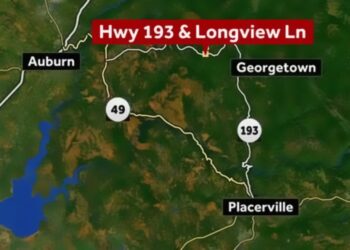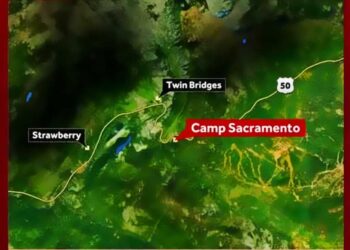By Cris Alarcon, InEDC Writer. (Oct 31, 2025)
PLACERVILLE, Calif. (AP) —
In a bid to cover operational costs and avoid relying on the general fund, the El Dorado County Film Office and the board of supervisors approved a new fee schedule that will affect all motion-picture, television, digital-media and commercial still-photography shoots across the county. The El Dorado County Chamber of Commerce is partnering with the film office under a memorandum of understanding (MOU) to administer the program.
Key Facts & Timeline
-
On Aug. 19, the board adopted Ordinance 5236, paving the way for a formal film-permit regime.
-
On Oct. 10 the county issued public notice of the hearing scheduled for Oct. 21 to adopt the fee schedule.
-
At the Oct. 21 meeting the board voted 5-0 to approve the fees, effective 30 days later. (Staff also directed the chamber and film office to provide annual updates on revenue, lodging tax (TOT), and sales tax impact.)
-
Fee schedule highlights (per the nexus study): application fee ~3.25 staff hrs; daily film permit fee for 1-20 people = $255; for 21-50 people = $510; for 51-100 people = $1,615. Prep/strike fees and commercial still-photography tiers also apply.
-
The nexus study estimates the full annual cost of the film-office program at $150,750, to be fully cost-recovered via the new fees.
Stakeholders & Objectives
County officials say the goal is clear: shift the burden of the film-office operation away from taxpayers, while preserving film production as a local economic driver.
“We’ll also be looking at things like TOT… sales tax, those kinds of things,”
said the film-office director.
On the other hand, local producers and location scouts express concern that higher costs will dissuade modest shoots, ultimately reducing filming activity and the associated economic benefit.
Potential Self-Defeating Outcome
While cost recovery is prudent, the central question is whether the new fee structure may inadvertently discourage productions that informally relied on lower barriers to entry. If fewer projects occur, the very revenue streams (lodging, hospitality, location rentals, local hires) used to justify the program may shrink, undercutting the policy’s objective.
For example, the nexus study states the fees
“are based on staff time per permit activity … the costs were multiplied by billing rates to calculate per-activity costs.”
Still, an industry participant pointed out that location fees are only one part of filming budgets—and when rate structures become prohibitive, producers may look elsewhere.
“We don’t get to charge $10,000 just because we love our county and think it’s worth that,”
said District 4 Supervisor Lori Parlin during the hearing.
“It has to be based on staff costs.”
Implications for El Dorado County
-
Economic impact tracking becomes crucial. The county will need to monitor not only fee revenue, but secondary benefits like increased occupancy at local lodging, revenue at local businesses, and extended regional exposure.
-
Small-scale projects may bear the brunt. While larger commercial or feature‐film productions may absorb higher costs, indie filmmakers or digital-media crews might opt for more cost-effective jurisdictions.
-
Competitive regional environment. Neighbouring jurisdictions like Placer County may offer lower fees or stronger incentive programs—raising the risk of losing desirable productions.
-
Periodic review built in. The film office noted it will monitor activity and consider revising the fee schedule if real-world permit volumes and production activity diverge from estimates.









